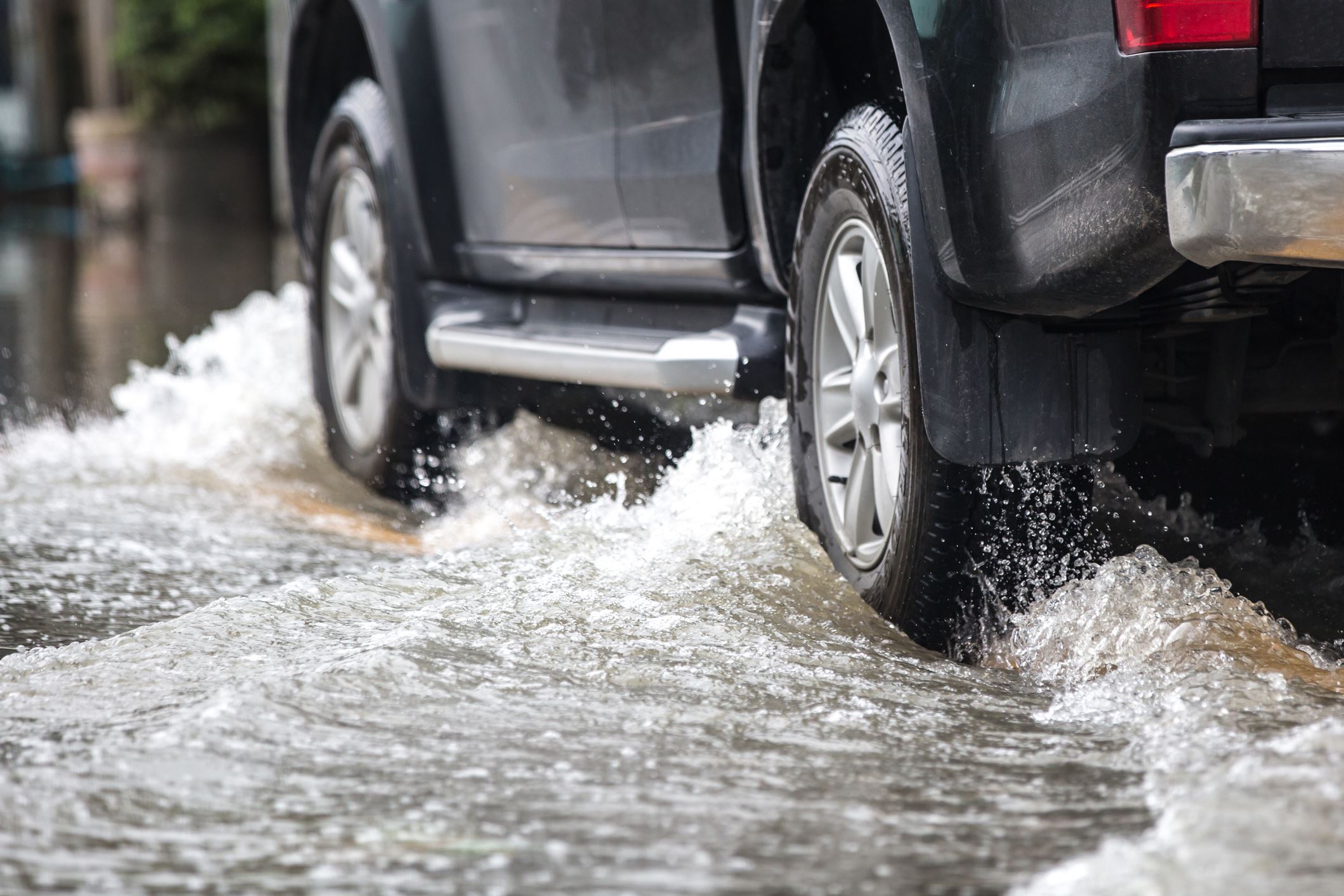It goes without saying that if you don’t have to go out in a torrential downpour, then don’t. If you have the choice, stay home. But, there are instances when staying home isn’t an option. Maybe you need to pick up your kids from soccer practice or have to go to the airport or some […]
It goes without saying that if you don’t have to go out in a torrential downpour, then don’t. If you have the choice, stay home. But, there are instances when staying home isn’t an option. Maybe you need to pick up your kids from soccer practice or have to go to the airport or some other unavoidable reason, In those cases you don’t have the luxury of waiting out the weather. So, here are a few tips from Gerry’s OK Tire to help you out the next time you are caught in a deluge.
- Slow down. Driving in the rain is dangerous and you need to give yourself and others enough time to respond to unexpected hazards.
- Turn on your defroster so that your windshield doesn’t fog up. You don’t need foggy windows on top of low visibility from heavy rain.
- Make sure you don’t turn on cruise control if you happen to get caught on the highway. You want to make sure you are in full control of the speed of your vehicle in case you encounter any hazards.
- Make sure your head lights are on. You want oncoming vehicles as well as vehicles in front of you to see you on the road.
- Leave room between your vehicle and ones in front of you.
- Avoid slamming on the brakes and be sure there isn’t someone close behind you if you need to brake.
- Treat your windshield with a rain protector. This is wax like liquid that will wick away rain without the need of wipers.
- Be prepared to slow down and possibly turn on your emergency hazard lights if a truck or semi is about to pass. The overspray from these vehicles can render you unable to see the road ahead.
- Drive in the right lane whenever possible and avoid the middle lanes.
- Check your tires: Your tires are your best friend in wet weather driving, providing traction and keeping you steady on the road. Check your tread and tire pressure to make sure you’re ready to hit the road even when it’s wet.
- Check lights and windshield wipers, too: Your windshield wipers can clear water quickly and help you see better, while lights give you and other drivers better visibility in the rain and dark. Make sure everything is in working order.
- Pull over if it’s really bad: If you can’t see cars in front of you or are having difficulty controlling your vehicle, simply pull over and wait for the rain to slow down.
- Always make sure your gas tank is half full. This will prevent unwanted emergency pit stops and will give you more options on the highway.
- If you happen to hydroplane, try to stay as calm as possible. Unlike sliding on snow and ice, the best way to stop hydroplaning is to take your foot off the gas. Do not brake or attempt to steer into or out of a skid or spin. Most of the time, hydroplaning lasts for only a second or two. If you do hit the brakes out of pure instinct, ease up on the brakes until it’s over. If you drive a manual transmission, you’ll also want to keep the clutch pedal pressed to the floor. Additionally, don’t slam on the brakes or yank the steering wheel. This could cause you to lose further control. It’s best to wait to brake until you’re out of the skid. However, if you must brake to avoid an accident, brake normally. If your vehicle doesn’t have ABS, pump the brakes lightly. To avoid other vehicles or obstacles, you may need to steer. Just be sure to do as little steering as you can until you’ve regained control. It’s very easy to oversteer when hydroplaning.
- Try to avoid large puddles or water on the side of the road. It’s almost impossible to know how deep a puddle or other standing water really is. Even the best tires cannot move water away fast enough to keep you from hydroplaning at high speeds through deep water. Additionally, going through standing water can stall your engine and leave you stranded if enough water gets into the intake or exhaust. If you do make it safely through a large puddle, check that your brakes are working properly by tapping them gently a few times.
As you can see, there are a lot of ways you can drive safer in the rain. As usual, it is always a good idea to make sure your vehicle is road worthy and up to date on all service visits. Making sure your vehicle has good brakes, the fluids are all topped up and everything is in working order, will really matter when faced with any unexpected road related conditions. If you think your vehicle needs to be serviced, contact us or book a visit with one of our trusted service technicians.

